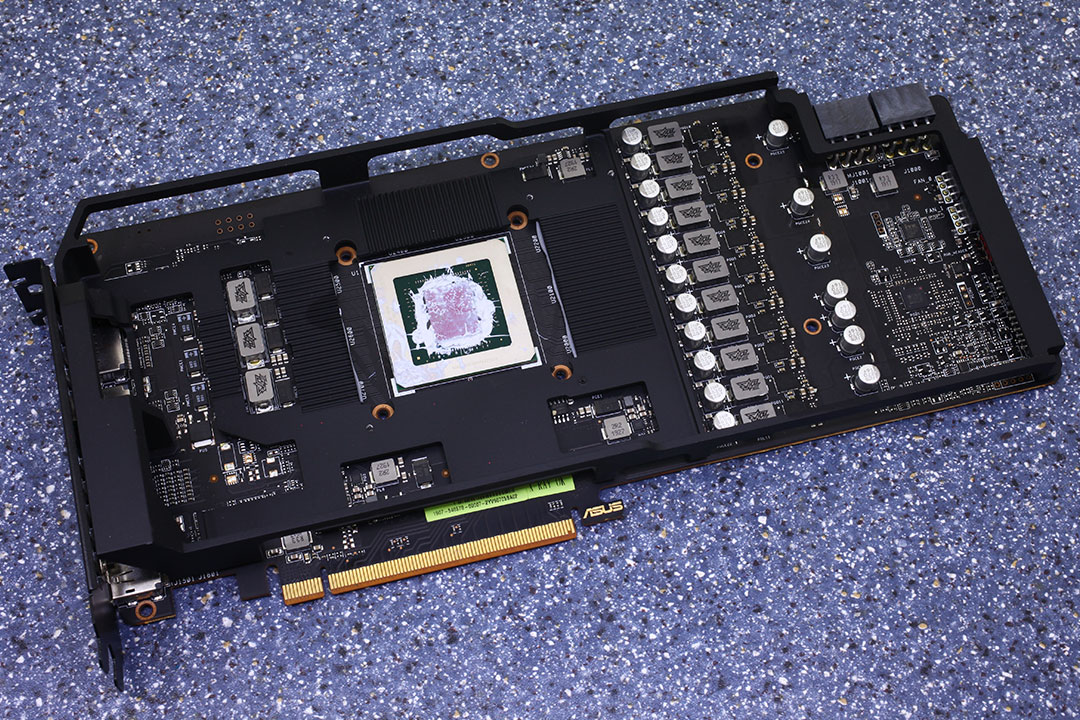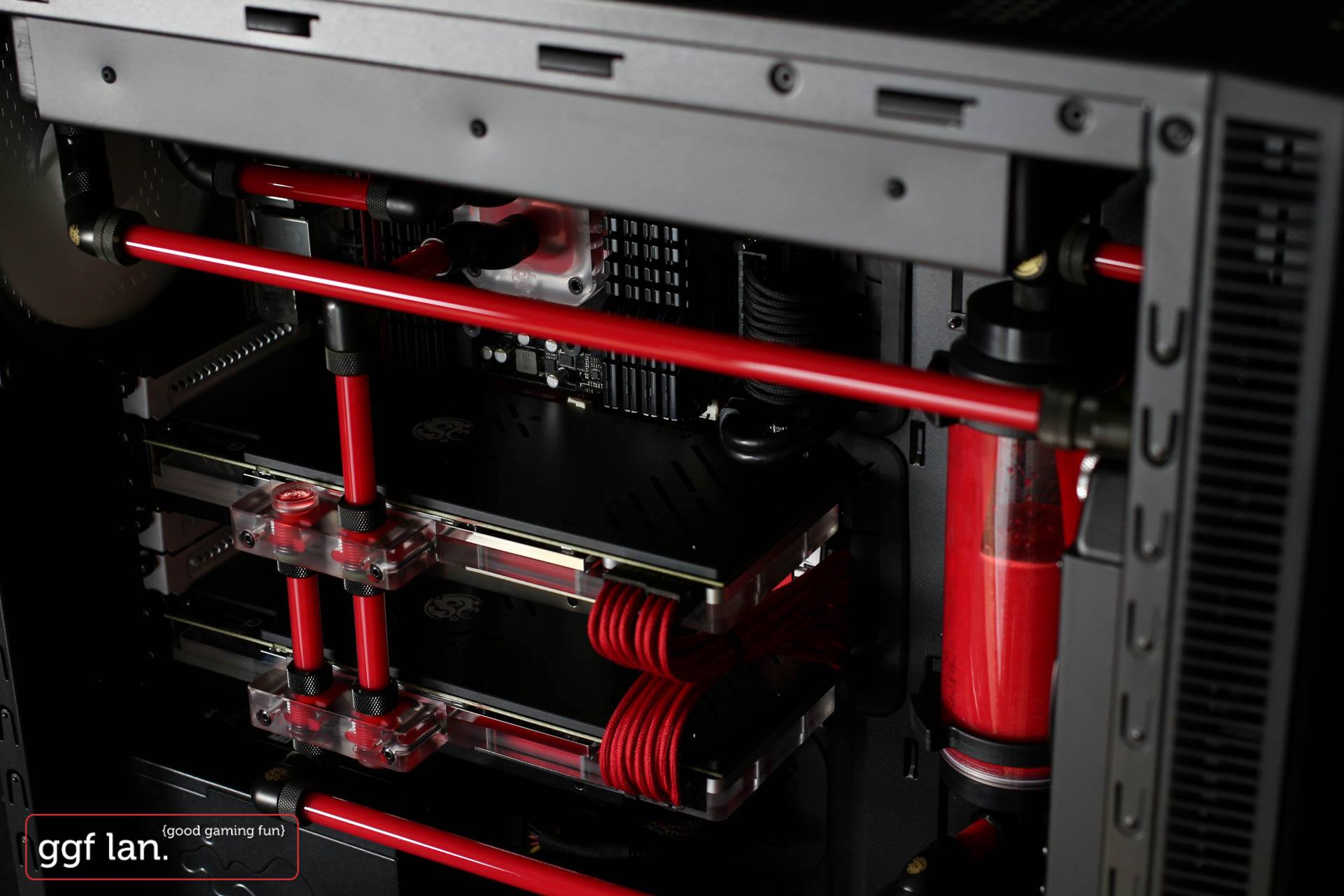
Hello, Habr! I present to you a translation of an article from APC magazine.
Before you dive into the study of the features of CBO, let me try to dissuade you from this venture, or, perhaps, make you admire it even more.
Let's talk about a dissident in the custom PC world. Yes, we are talking about water cooling. In particular, why is it not good. Over the course of five years, I have been able to assemble about 60 personal computers. 12 of them had different CBOs, not counting the AIO builds. So I have a fairly complete understanding of this very specific hobby. And, alas, I can say that dropsy is a mess. Next, I will explain in detail why.
01. Price
First of all, the biggest obstacle that everyone who wants to buy an SVO will have to face is its high cost. The problem is that if you are craving dropsy (because admit it looks adorable, and for most of us this is the main reason why we want to buy it), you have to start by taking apart a video card that can cost $ 1,400. and from the $ 200 waterblock mount.
02. Components
I do not even know where to start. When you think about tiny expensive components for a water cooling system, you think something like this: "I'll start with soft tubes, it's the easiest thing," and then you think: "I'll buy more compression fittings and you're done." While technically possible, assembly with soft tubing and standard fittings alone is not the easiest method.
And interestingly, the more liquid cooling components you assemble, the more experience you gain, and the more likely you will be inclined to replenish and use this arsenal. And this in turn raises the cost of the final assembly.
For example, the assembly of a 4K gaming monster that we did at the end of 2019 was a set of 70 parts, 12 different types and 2 brands for a total of about $ 1,000.
This is a cosmic figure, but add to it the average waterblock price well above $ 200, radiators hovering between $ 100 and $ 200, and don't forget the pump and reservoir, and the price will eventually go up to $ 2,500.

03. Gaining experience
And then you will need to apply the knowledge gained in practice, which means a lot of trial and error, research and planning. And this process seems endless.
Here are some basic guidelines:
- first, make sure that the water from the reservoir enters the pump;
- -, , , ;
- -, , ;
- -, , G1/4;
- -, , , . .
04.
After the preliminary preparations, you will begin bending the tubes, which is a mystical act in itself. To be honest, I always wonder why it works every time I do this.
When it comes to bending, you should pay attention to the material: are the tubes made on the basis of PETG or simple acrylic fiber (tubes made of PETG have a lower inflection point, different heating characteristics, shock-resistant, but less transparent). Then you need to outline the bend, the angle at which you want to bend the tubes, and the angle measuring device.
Most, myself included, agreed that the optimal fold angle is 90 °. If it is larger, then the tube section will look sloppy and generally incomparable with how you envisioned it. Unless you are a professional in this matter.
On the other hand, if you are aiming to add more corners, there are many tube bending tools available to you. But, I think, most likely this will end up with you bending the tubes about the corners of the table or some other rectangular object.
And one more thing: you can watch a thousand videos and read a million pipe bending tutorials, but the best way to learn it is to try it yourself.
05. Increased productivity
It's a shame to admit this, but, as practice shows, you should not expect a noticeable increase in productivity.
Yes, of course, the components will heat up less, but their isolation within their own architecture can lead to the fact that they can play the silicon lottery. If you are a big fan of overclocking, CBO can definitely be useful for you, but it is not enough to solve stability problems. In fact, you can expect an increase in performance of about 10-15% over air-cooled systems, and this is even the best case.
Dropsy will be beneficial for owners of auto-overclocked processors such as Ryzen, especially with Precision Boost Overdrive technology and GPU Boost for video cards.
The best thing about liquid cooling technology is the ability to reduce the amount of noise your computer makes. And this is quite achievable. Join two large 360 mm loops into a single loop. heatsink, processor and graphics card, and you will immediately notice that the noise from your PC is much lower compared to traditional cooling through coolers and heat pipes.
06. Service
So, you have assembled and launched the CBO, it looks cool, the temperature inside the case is lower, and the computer's performance is slightly higher. Now you need to learn how to keep it working. This means that in the first week, you must get rid of the remaining air in the system. To do this, you can simply wait a while, or you can tilt and rotate the body so as to move air bubbles into the reservoir, and then fill it under the neck with even more coolant. Most likely, over the last option you will have to smash your head pretty much. Once you get it over with, congratulations - your system is working as intended.
However, over time, without proper care, the coolant can contaminate the water block, which can lead to a decrease in its performance and a decrease in thermal power during operation. This means that every 6-12 months (in some cases more if you have a high-quality refrigerant), you will have to drain the entire system, disassemble it, flush the radiator and water block, reassemble and fill with water.
07. Actually
In fact, you will have to shell out a lot of money to get the whole structure, and a lot of time to figure out how to assemble it and to plan the purchase of parts, but in the end it turns out that the increase in productivity, other than the reduction of noise, negligible. Add to that the anxiety that comes with disassembling the unnecessarily expensive components (thanks to Nvidia) needed to build the system and keep it running, and you conclude that there is no point in doing this for the average user.
But as a person who has assembled 12 liquid cooling systems and is still assembling them, it is interesting for me to learn something new from each assembly. And so I will continue to do this until I lose interest in this masochistic hobby. What for? Well, besides the fact that my gentle millennial ears want the PC to make less noise than when a jet-powered plane takes off, this build looks pretty damn cool. CBO is amazing, successfully collecting it is like reaching the top of a mountain. And, looking back at the many frustrations and the huge waste of money and time it takes to create this miracle of short lifecycle performance as core count and clock speed are gaining more weight in our industry, you come to the conclusion that that there is something definitely beautiful about this masochistic hobby.